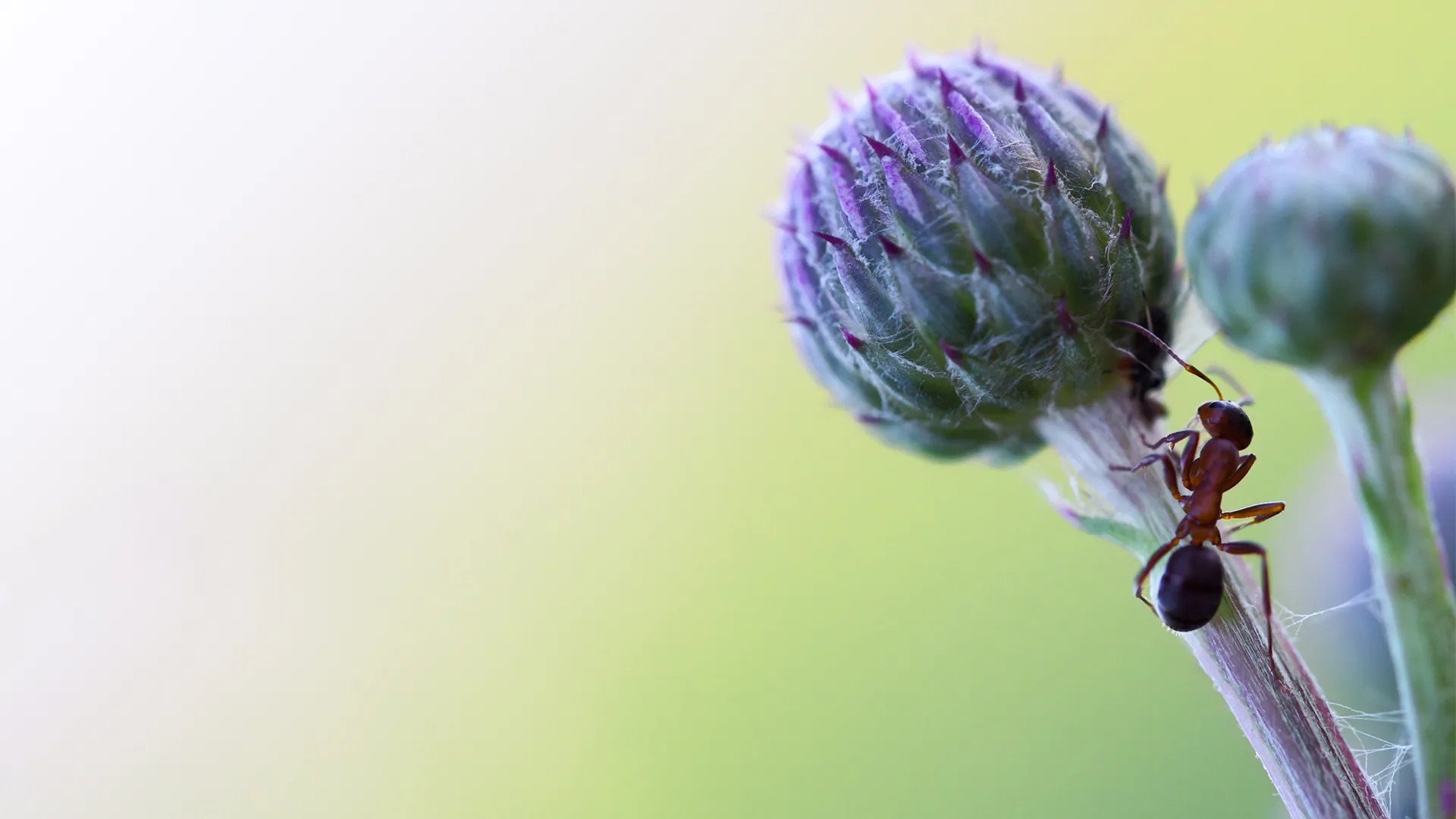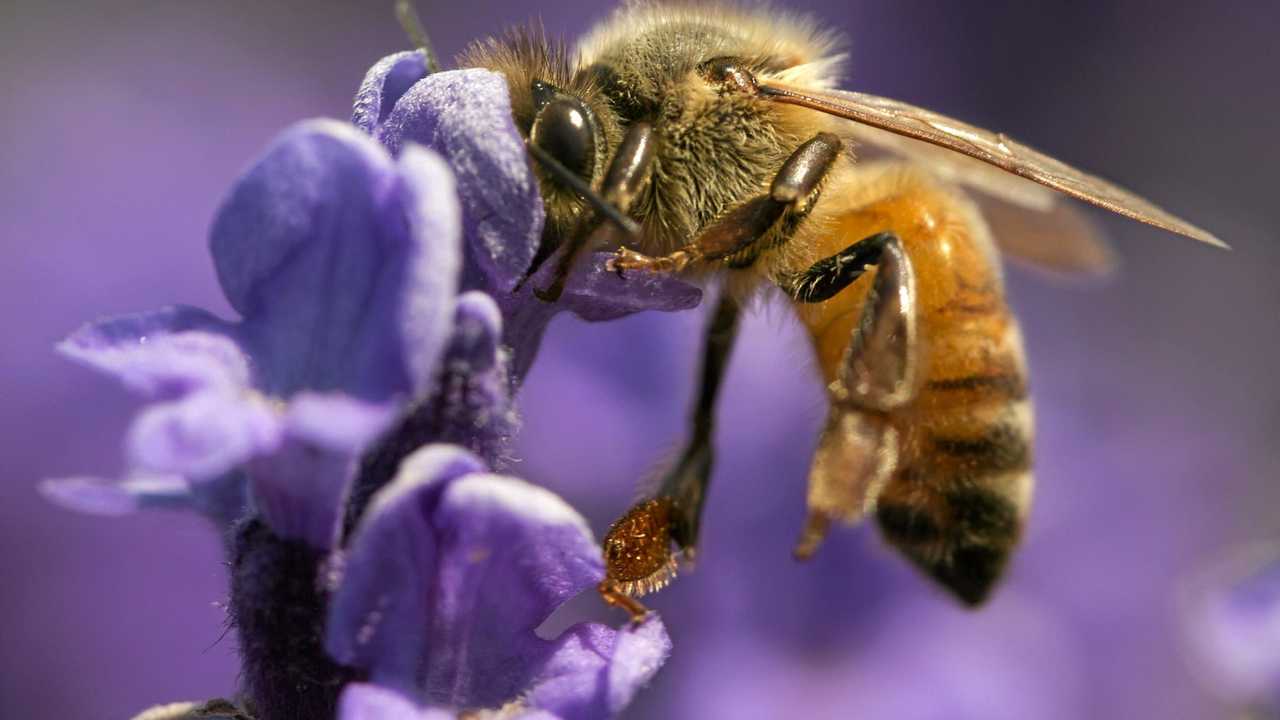Home>Gardening News and Trends>Latest News>Insects Are Most Likely Found In Which Aquatic Zone?


Latest News
Insects Are Most Likely Found In Which Aquatic Zone?
Published: December 9, 2023
Discover the latest news on the most common aquatic zone where insects are found. Explore the fascinating world of insects and their preferred habitat.
(Many of the links in this article redirect to a specific reviewed product. Your purchase of these products through affiliate links helps to generate commission for Chicagolandgardening.com, at no extra cost. Learn more)
Table of Contents
Introduction
When it comes to aquatic environments, there are various zones that support different forms of life. These zones range from the freshwater habitats of rivers and lakes to the saltwater ecosystems of oceans and seas. Each zone has its own unique characteristics and provides a home for a wide variety of organisms. Among these organisms, insects make up a significant portion of the aquatic fauna. However, the specific aquatic zone where insects are most likely to be found may vary.
Insects are incredibly diverse creatures, with over a million identified species worldwide. They have successfully adapted to a wide range of environments, including freshwater and marine habitats. In aquatic ecosystems, insects play vital roles in nutrient cycling, food webs, and even water quality improvement. They are not only a crucial part of the food chain but also indicators of ecosystem health.
Before delving into the most likely aquatic zones where insects are found, it is essential to understand the different types of aquatic environments. Freshwater aquatic zones include rivers, streams, lakes, and ponds. Marine aquatic zones encompass oceans and seas. Lastly, there is the estuarine aquatic zone, which is the transitional zone between freshwater and saltwater environments.
Now, let’s explore each of these aquatic zones in greater detail to determine where insects are most commonly found.
Freshwater Aquatic Zone
The freshwater aquatic zone is home to a diverse array of insects due to the availability of various microhabitats and abundant resources. Insects found in this zone have adapted to living in environments such as rivers, streams, lakes, and ponds. They have developed unique features and behaviors that allow them to thrive in these freshwater ecosystems.
River systems are dynamic and constantly changing, offering a wide range of habitats for insects. Insects such as mayflies, stoneflies, and caddisflies are commonly found in rivers. The fast-flowing water and rocky substrate provide ideal conditions for their nymphs, which are aquatic juvenile stages. These nymphs have specialized adaptations for clinging to rocks or burrowing in the sediment to avoid being swept away by the current.
Streams, which are smaller and narrower than rivers, also harbor a diverse range of insect species. Insects like dragonflies, damselflies, and midges are commonly found in streams. The slow-moving or stagnant sections of streams provide suitable breeding grounds for mosquitoes and other insects that prefer still water.
Lakes and ponds, on the other hand, offer a different set of habitats for freshwater insects. The calm, standing water provides opportunities for insects to colonize the surface, sub-surface, and even the benthic zone. Mosquitoes, water striders, and diving beetles are some of the insects that inhabit these environments. Certain insects, like water bugs and dragonfly nymphs, have adapted to be effective predators in lakes and ponds, utilizing their strong jaws and agility to capture prey.
In addition to these habitats, freshwater wetlands and marshes are also important areas within the freshwater aquatic zone. These areas are characterized by shallow water and abundant vegetation, which create suitable conditions for various insects. Mosquitoes, midges, and damselflies are commonly found in wetland ecosystems, utilizing the standing water and emergent vegetation for breeding and feeding.
Overall, the freshwater aquatic zone provides a wide range of habitats for insects to thrive. The abundance of resources and diverse microhabitats present in rivers, streams, lakes, ponds, and wetlands make them ideal environments for many insect species. It is in these freshwater ecosystems that insects play critical roles in nutrient cycling, pollination, and serving as a vital food source for other organisms.
Marine Aquatic Zone
The marine aquatic zone encompasses the vast expanse of oceans and seas, offering a unique and challenging environment for insects. While insects are generally more abundant in freshwater habitats, there are still several insect species that have adapted to survive in the marine environment.
Insects are not typically found in the open ocean, as they are primarily adapted for terrestrial or freshwater habitats. However, there are exceptions to this rule. One such example is the ocean skater (Halobates spp.), commonly known as the sea skater or water strider. These insects have evolved specialized adaptations, such as hydrophobic legs, allowing them to walk and move effortlessly on the surface of the water. Ocean skaters primarily inhabit the calm seas near coastal areas, where they can find food and shelter.
Although insects may be rare in the open ocean, they can thrive in areas where freshwater meets the saltwater, such as estuaries and coastal lagoons. These transitional zones provide a mix of freshwater and saltwater conditions, attracting a variety of insect species. Mosquitoes, for example, can be found in coastal marshes and mangroves, where they utilize the brackish water as breeding sites.
Insects in marine environments often have unique adaptations that enable them to survive the high salinity and constant tidal movements. Some species have evolved to be able to tolerate or even feed on saltwater. Others have developed specialized reproductive strategies to ensure the survival of their offspring in fluctuating water conditions.
In coastal areas, where the marine environment meets the land, insects can be found in intertidal zones and rocky shores. These areas are covered by water during high tide and exposed during low tide. Insects such as beetles, ants, and flies have adapted to these intertidal habitats. They are able to withstand periodic immersion and dehydration, making use of the available resources for food and shelter.
While the marine aquatic zone may not be as rich in insect diversity as the freshwater aquatic zone, there are still insect species that have successfully adapted to survive in this challenging environment. These insects play important roles in the coastal ecosystem, contributing to nutrient cycling, pollination, and providing a food source for other organisms.
Estuarine Aquatic Zone
The estuarine aquatic zone is the transitional area between freshwater and saltwater environments, where rivers meet the sea. Estuaries are highly dynamic and productive ecosystems, characterized by fluctuating salinity levels, tidal movements, and a mix of freshwater and saltwater. These unique conditions create a diverse and thriving habitat for a wide range of organisms, including insects.
Insects in estuarine ecosystems have adapted to the fluctuating salinity levels. Some species are able to tolerate both freshwater and saltwater, making them well-suited to survive in estuaries. Mosquitoes, for example, are commonly found in estuarine areas. They can lay their eggs in both freshwater and brackish water, taking advantage of the changing salinity levels as tidal movements occur.
The vegetation found in estuaries, such as salt marshes and mangroves, also provides important habitats for insects. These coastal wetlands are home to a variety of insect species that are adapted to the unique conditions of these environments. Salt marsh mosquitoes, midges, and flies are commonly found in salt marshes, utilizing the abundant vegetation and brackish water for breeding and feeding.
In addition to the insects found in estuarine wetlands, there are also species that inhabit the intertidal mudflats. These mudflats are exposed during low tide and submerged during high tide, creating a challenging environment for organisms. Insects such as beetles and ants have adapted to these conditions and can be found in the intertidal zone, feeding on detritus and other organisms that inhabit the mudflats.
Estuaries are not only important habitats for insects, but they also serve as vital nurseries and feeding grounds for many other organisms, including fish, birds, and marine mammals. Insects in estuarine ecosystems play important roles in nutrient recycling, pollination, and as a food source for other organisms. They are integral to the overall functioning and health of these dynamic ecosystems.
Overall, the estuarine aquatic zone provides a rich and diverse habitat for insects. As a transitional zone between freshwater and saltwater environments, estuaries support a wide range of insect species that have adapted to survive in the fluctuating salinity levels and dynamic conditions. The insects in estuarine ecosystems contribute to the ecological balance and are an integral part of the interconnected web of life in these unique habitats.
Conclusion
Aquatic environments are home to a wide variety of organisms, including insects. These fascinating creatures have adapted to thrive in different aquatic zones, each providing unique challenges and opportunities.
In the freshwater aquatic zone, insects can be found in diverse habitats such as rivers, streams, lakes, ponds, and wetlands. They have developed specialized adaptations to live in fast-flowing waters, still waters, and even in the benthic zone. Insects play crucial roles in nutrient cycling, food webs, and ecosystem health in these freshwater ecosystems.
In the marine aquatic zone, while insects are generally less abundant, there are still species that have adapted to survive in this challenging environment. They are often found in coastal areas, transitional zones, and intertidal habitats. These insects contribute to the coastal ecosystem’s functions and provide food sources for other organisms.
The estuarine aquatic zone, as the transitional area between freshwater and saltwater, supports a diverse range of insect species. These insects have adapted to the fluctuating salinity levels, utilizing habitats such as estuaries, salt marshes, and intertidal mudflats. They play important ecological roles in estuarine ecosystems, contributing to nutrient recycling and serving as a food source for various organisms.
Overall, insects are resilient and adaptable creatures that have found ways to thrive in various aquatic zones. Their presence and abundance in these environments have significant ecological implications, influencing nutrient cycling, pollination, and food webs. Understanding the distribution and adaptation of insects in aquatic zones is crucial for conserving and managing these fragile ecosystems.
Next time you find yourself near a river, lake, ocean, or estuary, take a moment to observe the incredible diversity of insects that call these habitats home. They are not only a vital part of the aquatic ecosystem but also fascinating creatures that continue to inspire scientific curiosity and awe.






